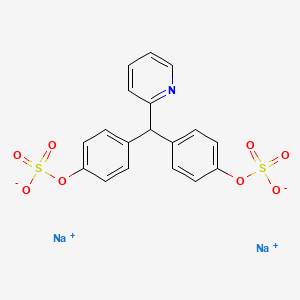Attribution Statement: LactMed is a registered trademark of the U.S. Department of Health and Human Services.
NCBI Bookshelf. A service of the National Library of Medicine, National Institutes of Health.
Drugs and Lactation Database (LactMed®) [Internet]. Bethesda (MD): National Institute of Child Health and Human Development; 2006-.
CASRN: 10040-45-6

Drug Levels and Effects
Summary of Use during Lactation
Sodium picosulfate is not absorbed from the gastrointestinal tract, and its active metabolite, which is absorbed, is not detectable in breastmilk. Sodium picosulfate can be taken during breastfeeding and no special precautions are required.
Drug Levels
Maternal Levels. Sixteen postpartum women who were not breastfeeding, but were producing at least 200 mL of milk daily by breast pump were given either oral enteric-coated bisacodyl tablets (Dulcolax) 10 mg daily or oral liquid sodium picosulfate (Laxoberal) 10 mg daily for 7 days. Both drugs are prodrugs metabolized to the active drug, bis-(p-hydroxyphenyl)-2-pyridyl-2-methane (BHPM). All breastmilk was collected daily from the day before drug administration to 2 days after the last dose. Free and conjugated BHPM were undetectable (<1 mcg/L) in all milk samples.[1]
Infant Levels. Relevant published information was not found as of the revision date.
Effects in Breastfed Infants
Relevant published information was not found as of the revision date.
Effects on Lactation and Breastmilk
Relevant published information was not found as of the revision date.
Alternate Drugs to Consider
Bisacodyl, Docusate, Magnesium Hydroxide, Psyllium, Sodium Phosphate
References
- 1.
- Friedrich C, Richter E, Trommeshauser D, et al. Lack of excretion of the active moiety of bisacodyl and sodium picosulfate into human breast milk: an open-label, parallel group, multiple dose study in healthy lactating women. Drug Metab Pharmacokinet. 2011;26:458–64. [PubMed: 21697613]
Substance Identification
Substance Name
Sodium Picosulfate
CAS Registry Number
10040-45-6
Drug Class
Breast Feeding
Lactation
Cathartics
Gastrointestinal Agents
Disclaimer: Information presented in this database is not meant as a substitute for professional judgment. You should consult your healthcare provider for breastfeeding advice related to your particular situation. The U.S. government does not warrant or assume any liability or responsibility for the accuracy or completeness of the information on this Site.